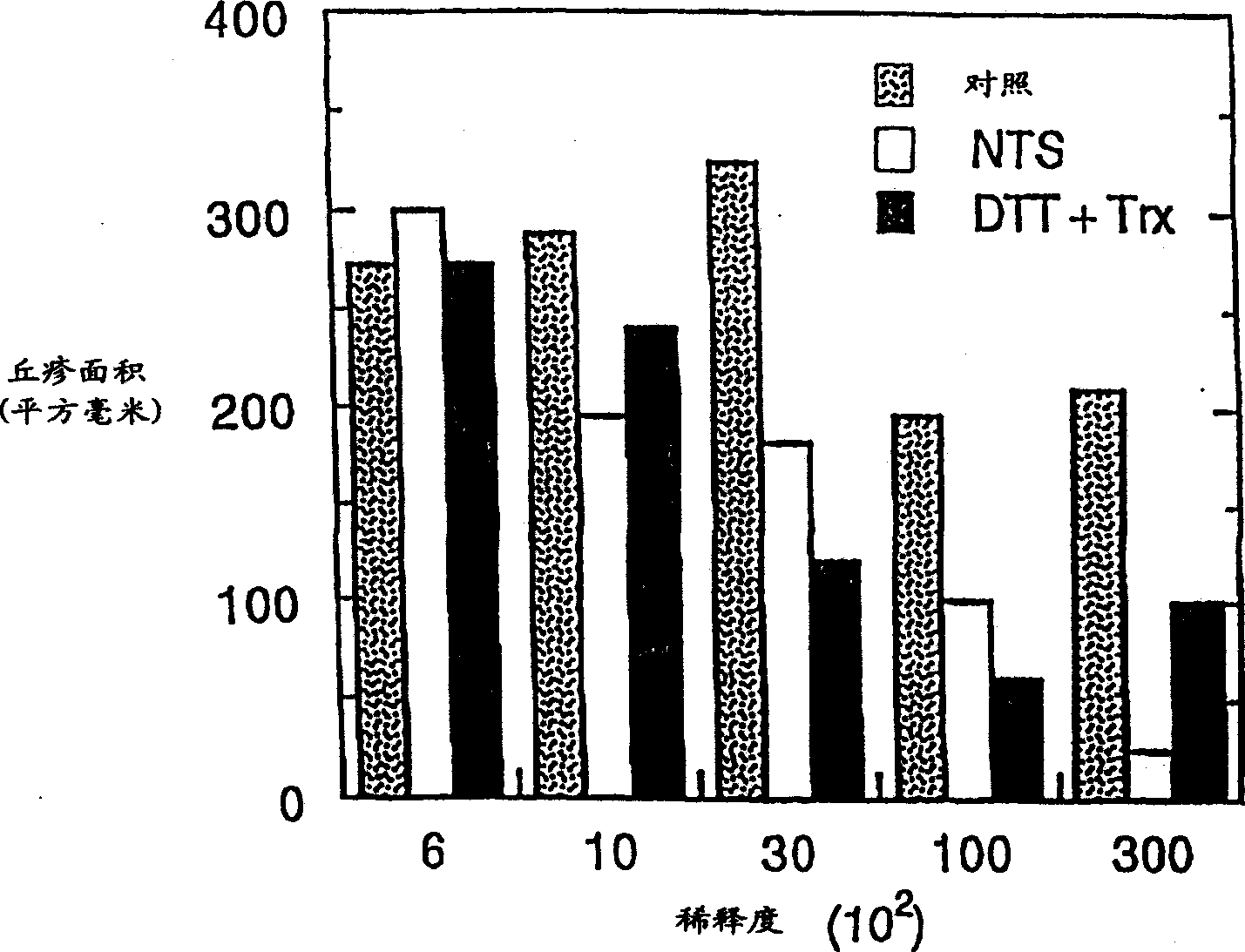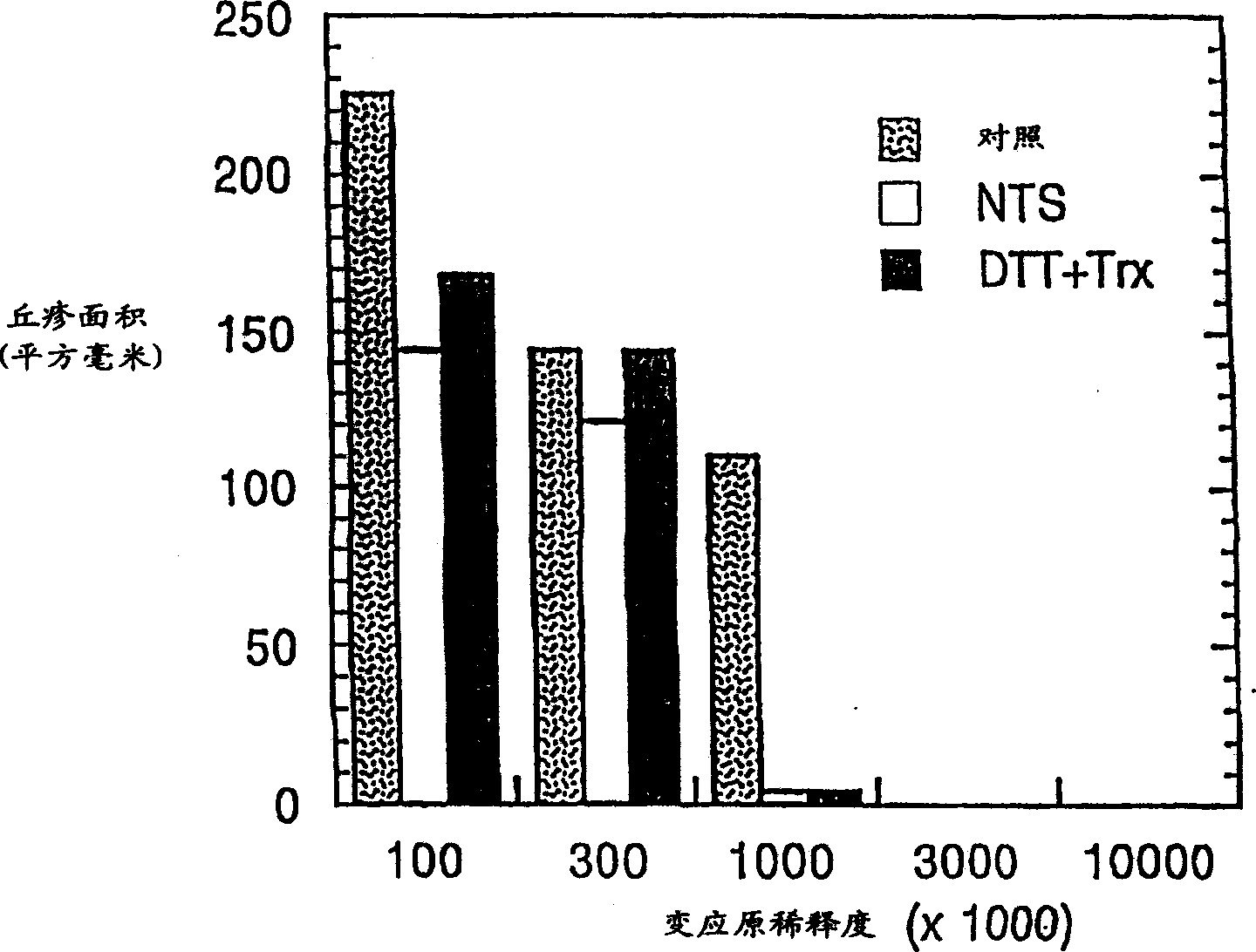Alleviation of the alelrgenic potential of airborne and contact allergens by thioredoxin
A thioredoxin and hypoallergenic technology, applied in the fields of oxidoreductase, plant protein processing, peptide/protein composition, etc., can solve the problems that have not been studied in depth, allergic reactions, and the ability to reduce are not understood
- Summary
- Abstract
- Description
- Claims
- Application Information
AI Technical Summary
Problems solved by technology
Method used
Image
Examples
Embodiment 1
[0144] Thioredoxin-associated reduction of alpha-amylase inhibitor protein
[0145] enzyme activation test
[0146] The ability to displace a specific thioredoxin in chloroplast enzyme activation is a test for the ability of a given protein's thiol group to undergo a reversible redox change. Although not a physiological state in the case of extraplastid proteins, this assay has proven useful in several studies. A related example is the purine thionin, which activates chloroplast FBPase when reduced by thioredoxin h (Wada, K. et al. (1981) FEBS Lett. 124:237-240 and Johnson, T.C. et al. (1987) Plant Physiol .85: 446-451). FBPase (whose physiological activator protein is thioredoxin f) is not affected by thioredoxin h. In this example, cysteine-rich proteins were tested for their ability to activate FBPase and NADP-MDH as previously described. The α-amylase inhibitors of durum wheat (DSG-1 and DSG-2) were found to be effective for enzyme activation; however they differ from ...
Embodiment 2
[0157] DTNB reduction test
[0158]A second test of thiol redox capacity was the ability to catalyze the reduction of the sulfhydryl reagent 2',5'-dithiobis(2-nitrobenzoic acid) (DTNB), as measured by an increase in absorbance at 412 nm. Here, the analyzed protein was reduced by NADPH via NTR and thioredoxin. The DTNB assay was confirmed to be effective for both durum (DSG-1 and 2) and bread wheat (CM-1 ) alpha-amylase inhibitory proteins. When reduced by the NADP / thioredoxin system (in this case using NTR and thioredoxin from E. coli), DSG-1 or DSG-2 significantly enhanced the reduction of DTNB (NADPH → NTR → thioredoxin protein → DSG → DTNB). DTNB reduction assays were performed with 10 µg thioredoxin and 10 µg NTR and 20 µg DSG-1 or DSG-2. CM-1 was also potent in the DTNB reduction assay and, as activated with NADPH-MDH (Table I), a higher activity than the DSG protein was detectable. The conditions for the CM-1 assay were the same as for the DSG / DTNB assay, except that...
Embodiment 3
[0162] Determination of protein reduction
[0163] The availability of monobromoperphrine (mBBr) and its suitability for use in plant systems provides a new technique for measuring the sulfhydryl groups of plant proteins (Crawford, N.A. et al. (1989) Arch. Biochem. Biophys. 271: 223- 239). When coupled with SDS-polyacrylamide gel electrophoresis, mBBr can even be used to quantify changes in the sulfhydryl state of redox-active proteins in complex mixtures. The technique was therefore applied to this inhibitory protein to demonstrate its ability to be reduced by thioredoxin. Here, the tested proteins were reduced with thioredoxin, which itself had been previously reduced with DTT or NADPH and NTR. The mBBr derivative of the reduced protein was then prepared, separated from other components by SDS-polyacrylamide gel electrophoresis, and its reduced state was detected by fluorescence. In the experiments described below, E. coli thioredoxin was found to be effective in reducing...
PUM
| Property | Measurement | Unit |
|---|---|---|
| molecular weight | aaaaa | aaaaa |
Abstract
Description
Claims
Application Information
 Login to View More
Login to View More - R&D
- Intellectual Property
- Life Sciences
- Materials
- Tech Scout
- Unparalleled Data Quality
- Higher Quality Content
- 60% Fewer Hallucinations
Browse by: Latest US Patents, China's latest patents, Technical Efficacy Thesaurus, Application Domain, Technology Topic, Popular Technical Reports.
© 2025 PatSnap. All rights reserved.Legal|Privacy policy|Modern Slavery Act Transparency Statement|Sitemap|About US| Contact US: help@patsnap.com



